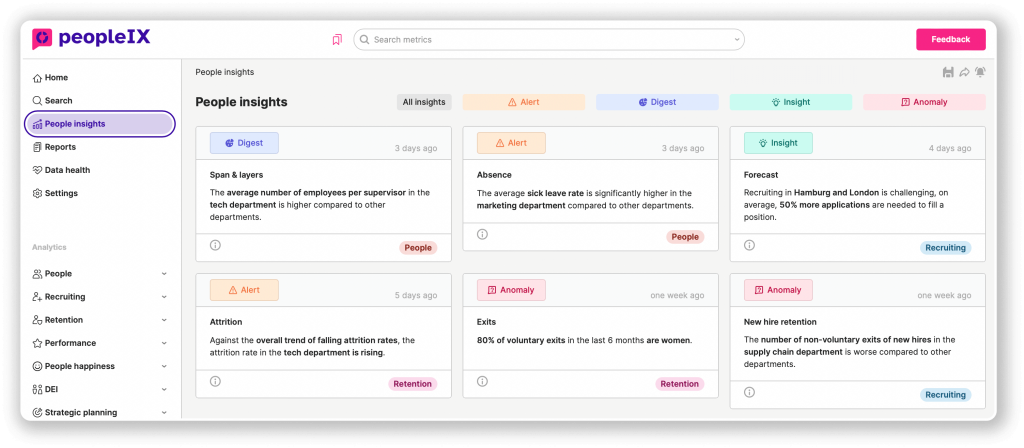We are excited to announce our €2.3 Million Pre-seed round led by Earlybird-X! →
How People Analytics is Different from HR Reporting
28 Dec

People analytics is the use of data and analytics to improve the way organizations make decisions about their workforce. It involves collecting, analyzing, and interpreting data about employee behavior, attitudes, and performance, and using those insights to inform and guide HR policies, processes, and practices.
HR reporting, on the other hand, involves the collection and presentation of data about specific HR processes, such as payroll and attendance. While both people analytics and HR reporting involve the analysis of data, there are several key differences between the two.
One key difference is the scope of the data being analyzed. People analytics involves collecting and analyzing data from a range of sources within an organization, including HR systems, payroll records, and employee surveys, to gain a more comprehensive understanding of the workforce. HR reporting, on the other hand, is typically focused on specific HR processes, rather than the broader workforce dynamics.
Another difference is the level of analysis and interpretation involved. People analytics involves a more in-depth analysis of the data, using techniques such as data visualization and predictive analytics to identify patterns and trends, and to inform and guide HR policies and practices. HR reporting, on the other hand, is generally more focused on presenting key metrics and data points, rather than providing analysis or interpretation of the data.
Finally, people analytics goes beyond just reporting to involve a more proactive and strategic approach to HR decision-making. While HR reporting can help organizations to track and monitor key HR metrics, people analytics enables organizations to use data and analytics to proactively identify and address key workforce challenges and opportunities. This might involve identifying high-performing employees who are ready for promotion, or identifying the factors that are most likely to lead to employee retention or turnover.
In an article for HRExaminer (Oct 2020), HR consultant and author John Sumser stated that “over the next two to five years HR’s most important asset will be its data”. People Analytics represents a new paradigm for HR decision-making, one that is driven by data and analytics rather than intuition and tradition.
In conclusion, while both people analytics and HR reporting involve the collection and analysis of data, there are several key differences between the two. People analytics is a more comprehensive and strategic approach to HR decision-making, one that involves collecting and analyzing data from a range of sources within an organization, and using data visualization and predictive analytics to identify patterns and trends, and to inform and guide HR policies and practices. By adopting a more data-driven approach to people analytics, organizations can use data and analytics to improve the way they make decisions about their workforce and drive business growth.
You are curious?
peopleIX connects all your HRIS, ATS and other HR data sources to create a unified view of your workforce. Get a personalized demo around your unique pain points and discuss your company’s specific needs. Find out how peopleIX can help you on your people analytics journey. Or discover our use cases in the areas of people, recruiting, retention and DEI.
References:
HRExaminer (Oct 2020): https://www.hrexaminer.com/the-emerging-hr-data-department
Recent Posts

Insight: Gender Pay Gap
February 12, 2025
The Challenges of People Analytics
November 12, 2024
People Analytics: Benefits, Origins & Best Practices
November 12, 2024Categories
- Analytics (2)
- Collaboration (1)
- Customer Sucess Stories (1)
- Data Management (1)
- Foundations (9)
- Human Resources (HR) (3)
- Platform (1)
- Recession Times (2)
- Tech Stack (1)
- Uncategorized (7)
- Use Cases (4)
PRODUCT
People Planning & Scenarios
Sharing & Collaboration
RESOURCES
STAY IN THE LOOP
Copyright © 2024 peopleIX GmbH. All rights reserved.



